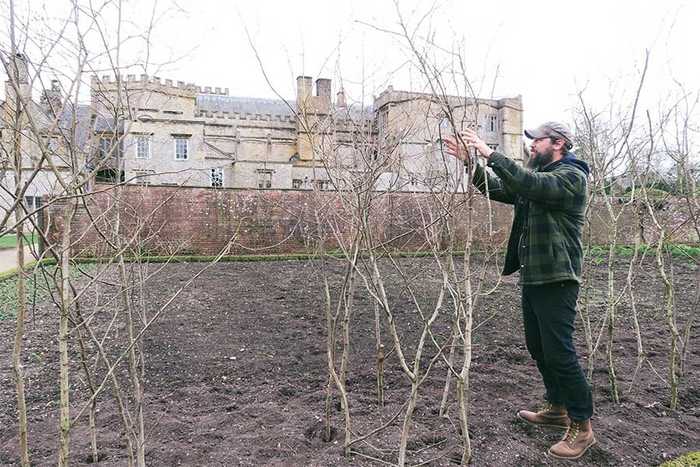Sweet Pea Supports

Last week Danny set about making a series of sweet pea supports for the kitchen garden – something for the sweet peas to scramble up when they’re planted out in a few weeks time, at the beginning of April.
He used coppiced hazel – 8 foot in length, choosing ones with lots of twiggy growth on that could be used to weave the structure together and create a better aesthetic overall. Bamboo and willow are good alternatives.
To create support that’s loosely in the shape of a wigwam, you’ll need eight lengths of hazel. Push each length into the ground in the shape of a circle, eight inches deep, a foot apart and 2 1/2 feet across each way. Firm them in around the base and pull them in together at the top and secure with twine.
Weave any twiggy bits in and out of one another, a loose woven effect that will give the sweet peas something extra to climb up.
Before you plant your sweetpeas out, wind a length of string around the base – roughly eight inches off the ground, something for them to cling to as they start their ascent.
Sweet peas can be prone to fungal infections leaving flowers and leaves mottled and flecked with white streaks. To prevent any spores from previous years affecting this year’s crop, Danny will mulch the beds with a thick six-inch layer of mushroom compost.
Sweet peas can withstand some frost, so this year we’ll be planting them out at the beginning of April and will give them a helping hand for the first couple of weeks with a liquid feed high in potassium – Tomorite or comfrey juice.
Plant them to the side of each stick (Danny plants to the right) rather than inside – one sweetpea per stick, eight in total.
As they begin to grow, tie them in by wrapping additional lengths around the support at intervals.
And water. Ideally, you want to water them in the morning, if possible, rather than later in the evening, as cold spells at this time of year can result in bud drop. Deadheading is the key to prolonged flowering, as well as picking. The more you pick, the more they’ll flower.
Danny will be hosting monthly garden workshops in the potting shed from the end of March focusing on seasonal jobs to do in the garden. As numbers are limited, you’ll need to ensure you book in advance. Please visit our events section for more information.
Posted on March 19th 2017

